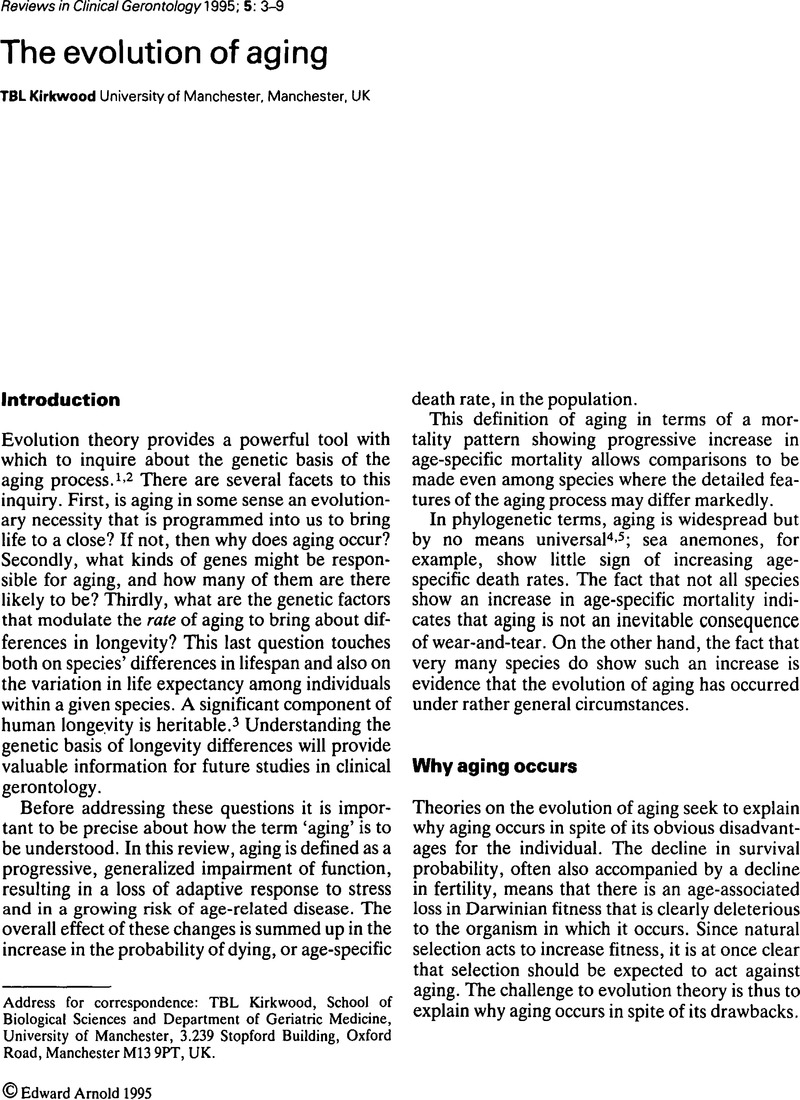Crossref Citations
This article has been cited by the following publications. This list is generated based on data provided by Crossref.
Lithgow, Gordon J.
1996.
Invertebrate gerontology: The age mutations of Caenorhabditis elegans.
BioEssays,
Vol. 18,
Issue. 10,
p.
809.
Brooks, Benjamin Rix
1997.
Clinical evaluation of ALS drugs.
Neurology,
Vol. 48,
Issue. 4_suppl_4,
Miller, Robert G.
and
Sufit, Robert
1997.
New approaches to the treatment of ALS.
Neurology,
Vol. 48,
Issue. 4_suppl_4,
Wheeler, John C.
King, Vanessa
and
Tower, John
1999.
Sequence requirements for upregulated expression of Drosophila hsp70 transgenes during aging☆.
Neurobiology of Aging,
Vol. 20,
Issue. 5,
p.
545.
Tower, John
2000.
Transgenic methods for increasing Drosophila life span.
Mechanisms of Ageing and Development,
Vol. 118,
Issue. 1-2,
p.
1.
Sun, Jingtao
Folk, Donna
Bradley, Timothy J
and
Tower, John
2002.
Induced Overexpression of Mitochondrial Mn-Superoxide Dismutase Extends the Life Span of Adult Drosophila melanogaster
.
Genetics,
Vol. 161,
Issue. 2,
p.
661.
Tower, John
2003.
Chromosomal Instability and Aging.
Sun, Jingtao
Molitor, John
and
Tower, John
2004.
Effects of simultaneous over-expression of Cu/ZnSOD and MnSOD on Drosophila melanogaster life span.
Mechanisms of Ageing and Development,
Vol. 125,
Issue. 5,
p.
341.
Landis, Gary N.
and
Tower, John
2005.
Superoxide dismutase evolution and life span regulation.
Mechanisms of Ageing and Development,
Vol. 126,
Issue. 3,
p.
365.
Waskar, Morris
Li, Yishi
and
Tower, John
2005.
Stem cell aging in the Drosophila ovary.
AGE,
Vol. 27,
Issue. 3,
p.
201.
Wagg, Adrian
2012.
Fesoterodine fumarate for the treatment of overactive bladder in the elderly – a review of the latest clinical data.
Clinical Investigation,
Vol. 2,
Issue. 8,
p.
825.
Philp, Ian
2013.
The Blackwell Companion to Social Work.
p.
121.
Gibson, William
and
Wagg, Adrian
2014.
Urinary incontinence in the frail elderly: what do we still need to learn?.
Clinical Practice,
Vol. 11,
Issue. 4,
p.
431.
Wagg, Adrian
2015.
Evidence-Based Physical Therapy for the Pelvic Floor.
p.
369.
Wagg, Adrian
2015.
Overactive Bladder.
p.
203.
Feng, Lei
2016.
Encyclopedia of Geropsychology.
p.
1.
Feng, Lei
2017.
Encyclopedia of Geropsychology.
p.
233.



